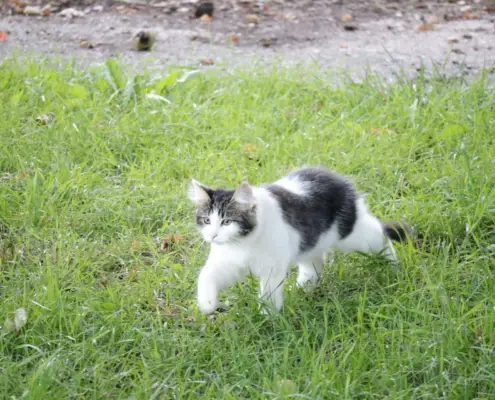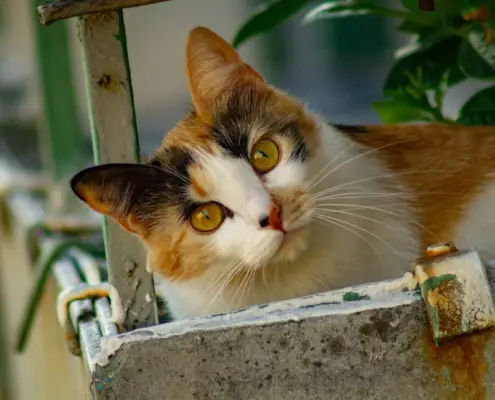
Introduction to Cat Behavior
Cats are fascinating creatures with a unique set of behaviors. They are known for their agility, grace, and independent spirit. As pets, they can be both affectionate and aloof, depending on their mood. Understanding cat behavior is essential for pet owners who want to provide the best care for their feline friends. This includes recognizing body language, vocalizations, and other signals that indicate a cat’s mood and intentions.
Understanding Cat Body Language
Cats communicate through a variety of body language signals. These include ear position, tail position, facial expressions, and more. When a cat is happy, relaxed, or content, their body language reflects this. Their ears are forward, their tail is relaxed, and their eyes may be partially closed. Conversely, when a cat is upset, anxious, or angry, their body language changes dramatically. Their ears flatten, their tail may puff up, and their eyes may widen.
The Reasons Behind Cat Twitching
One of the most common cat behaviors is twitching, particularly in the back area. This can be caused by a variety of factors, including nervousness, excitement, or even annoyance. Cats may also twitch their backs as a way to stretch their muscles or to release tension. In some cases, the behavior may be related to medical conditions such as arthritis or nerve damage.
The Role of Muscles in Cat Twitching
Cat twitching is often related to the muscles in their back. When a cat twitches, it may be because their muscles are contracting and relaxing rapidly. This can be a result of nervous system activity or stimulation of certain nerve pathways. The muscles in a cat’s back are particularly sensitive, and any changes in tension or movement can cause twitching.
Common Triggers for Cat Twitching
There are many triggers that can cause a cat to twitch. One of the most common is excitement or playfulness. Cats are natural hunters, and the movement of prey can trigger their instinct to pounce and play. Other triggers may include changes in the environment, such as loud noises or sudden movements. Some cats may also twitch when they are feeling anxious or stressed.
Medical Conditions Related to Cat Twitching
In some cases, cat twitching may be related to underlying medical conditions. For example, cats with arthritis may experience muscle spasms and twitching as a result of joint pain. Nerve damage or neurological disorders can also cause twitching, particularly in the back area. If your cat experiences frequent or severe twitching, it’s important to consult with a veterinarian to rule out any underlying medical conditions.
How to Help a Cat Experiencing Twitching
If your cat is experiencing twitching, there are several things you can do to help. First, try to identify any triggers that may be causing the behavior and eliminate them if possible. For example, if your cat is twitching due to loud noises, try to create a quieter environment. You can also try providing a calm and comfortable space for your cat to rest, and engaging in activities that promote relaxation, such as gentle petting or massage.
Tips for Preventing Cat Twitching
Preventing cat twitching can be challenging, but there are some steps you can take to minimize the behavior. One of the most important is to provide a calm and stable environment for your cat. This means minimizing loud noises, sudden movements, and other triggers that can cause anxiety or stress. You can also engage your cat in regular exercise and play to help release any pent-up energy or tension.
Myths and Misconceptions about Cat Twitching
There are several myths and misconceptions about cat twitching that are prevalent among pet owners. One of the most common is that twitching is a sign of aggression or anger. In reality, twitching can be caused by a variety of factors and is not necessarily an indication of a cat’s mood or intentions. Another myth is that cat twitching is always a sign of a medical problem. While this can be true in some cases, many cats experience twitching as a natural behavior that is not related to any underlying health issues.
Conclusion
Cats are complex creatures with a wide range of behaviors, including the intriguing twitching of their backs. As pet owners, it’s important to understand the reasons behind this behavior, including the role of muscles, common triggers, and potential medical conditions. By providing a calm and stable environment for your cat, engaging in regular exercise and play, and consulting with a veterinarian as needed, you can help ensure that your feline friend stays healthy and happy for years to come.
If you enjoyed my article, I would appreciate you sharing it with your network.

Sima Ndlebe
Sima writes for CatBuzz. He is interested in Cats, Health and Fitness, and Entrepreneurship.
Published: 25 October 2023




